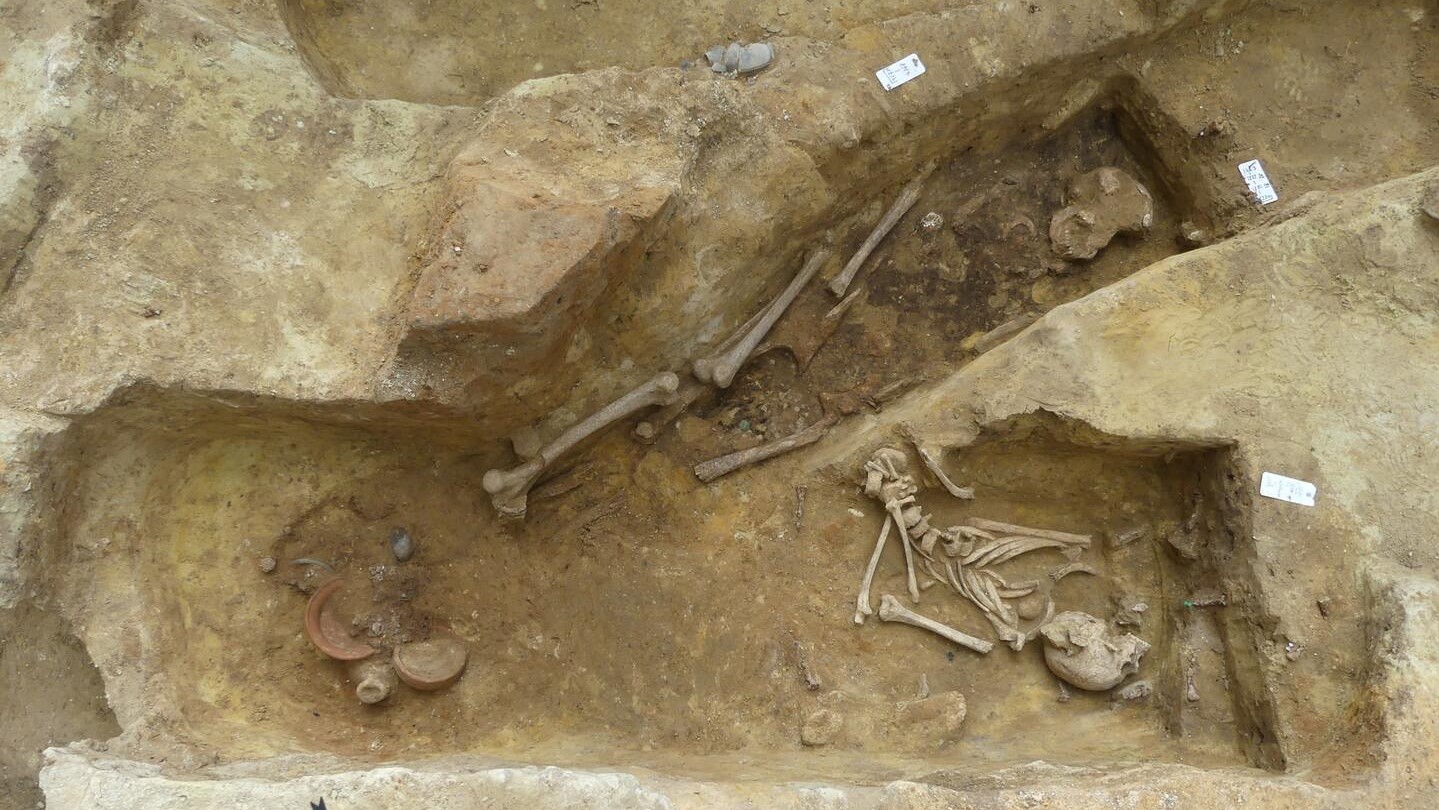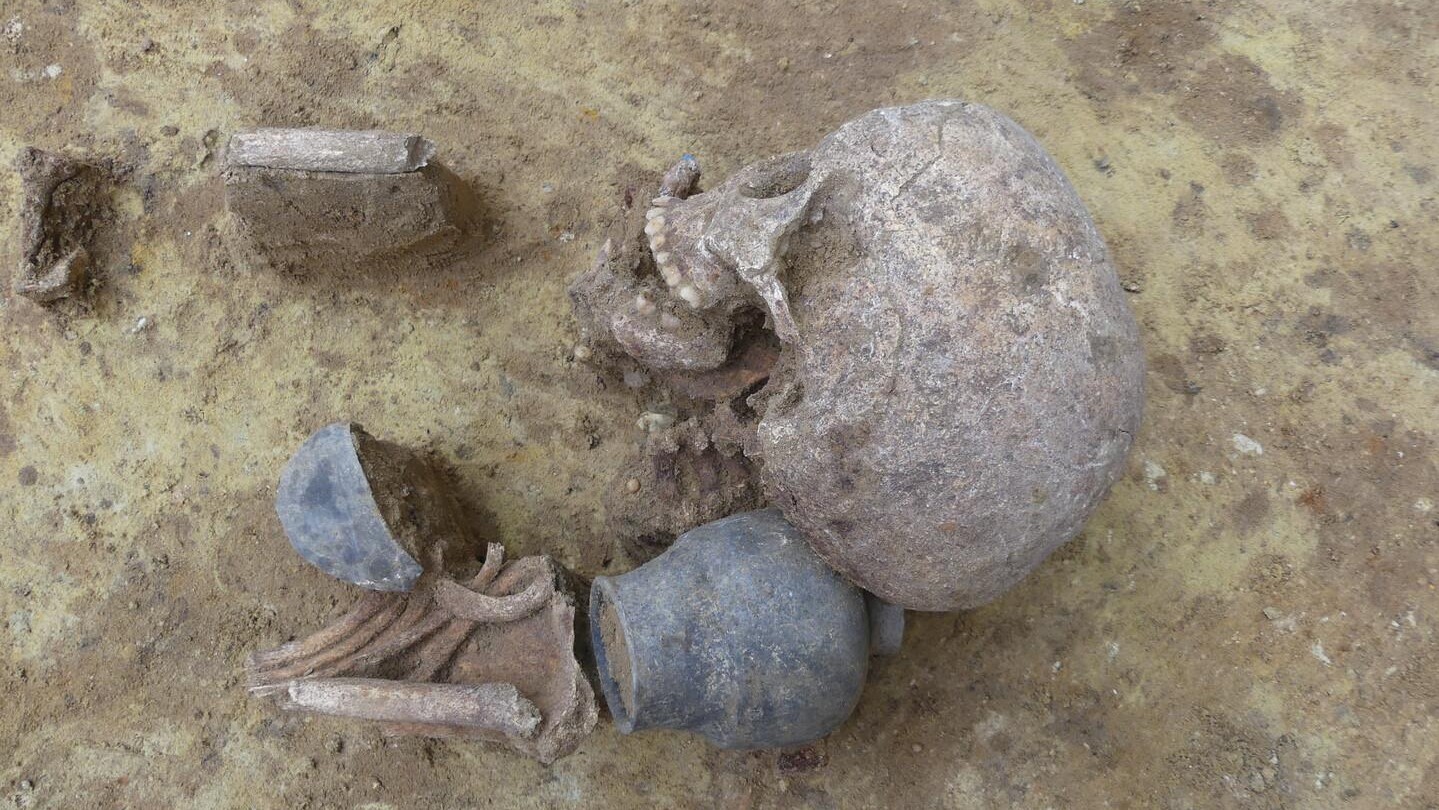
A forgotten necropolis packed with 50 graves has been discovered near a bustling train station in central Paris by archeologists excavating the site ahead of construction work.
Thousands of commuters have been unknowingly treading the ground just 10 feet (3 meters) above the 2,000-year-old graves, which belong to the largest known burial site in what was the Gallo-Roman town of Lutetia. The ancient town spread across 10 acres (4 hectares) in its heyday and sat on the banks of the Seine River, where Notre Dame Cathedral stands today, according to the French Ministry of Culture.
The site, known as the "Saint James necropolis," was located in the south of Lutetia and sprawled along one of its main thoroughfares, the Roman-built cardo maximus. Archeologists estimate that the site was used as a burial ground between the first and third centuries A.D., before it was abandoned in the fourth century.

The site, known as the "Saint James necropolis," was located in the south of Lutetia and sprawled along one of its main thoroughfares, the Roman-built cardo maximus. Archeologists estimate that the site was used as a burial ground between the first and third centuries A.D., before it was abandoned in the fourth century.
"Overall, the ancient history of Paris is poorly understood," Dominique Garcia, president of France's National Institute of Preventive Archaeological Research (INRAP), told France 24. "We will be able to carry out DNA studies thanks to the bones that we were able to find, so we're getting closer to a better understanding of the population of Paris in Antiquity."
Archeologists unearthed the remains of men, women and children, who they think belonged to a Gallic tribe called the Parisii that the French capital is named for. Among the bones, the archaeologists discovered various glass and ceramic artifacts, as well as jewelry and scattered coins that enabled them to date the burials to the second century.
Related: 40 tombs with humans buried in pots discovered in Corsica

The excavation, which began in March, revealed at least one skeleton with a coin in its mouth, pointing to an ancient funerary practice known as "Charon's obol." In Greek mythology, Charon ferried the souls of the dead across the Styx River and into the underworld in exchange for a bribe, which is why people buried coins alongside bodies, according to an INRAP statement.
Not all the graves contained human skeletons: One pit seemed reserved for burial offerings and contained the remains of a pig and another, smaller animal. The researchers have removed all the remains and artifacts from the site for analysis.
"Understanding all the steps of burials and funeral rites allows us to better understand the society of the Parisii," Camille Colonna, an archeologist at the INRAP, told France 24.
When they began excavations ahead of planned construction work in the Port-Royal train station, the archeologists had "strong suspicions" they were close to the ancient Saint-Jacques necropolis, Colonna said in a press conference.
Parts of the burial site were discovered and dated in the 1800s, when the city underwent major building works, but scientists at the time didn't explore the site any further. In the 1970s, rail construction projects destroyed areas of the necropolis and left others untouched, such as the newly unearthed site, according to the INRAP statement.
The newly unearthed area covers 2,150 square feet (200 square meters) and reveals that the necropolis stretched further to the west than previously thought. "No one has seen it since antiquity," Garcia said in the press conference.
The researchers found no evidence to suggest that the bodies had been cremated before burial, which would have been a common practice at the time, according to the statement. However, they did find traces of wood and nails indicating the use of coffins that have since decayed. Notably, Colonna said that the remains of shoes "either at the feet of the dead or next to them, like an offering," means that the dead were buried in their clothes.
The discovery opens "a window into the world of Paris during antiquity," Garcia said.







